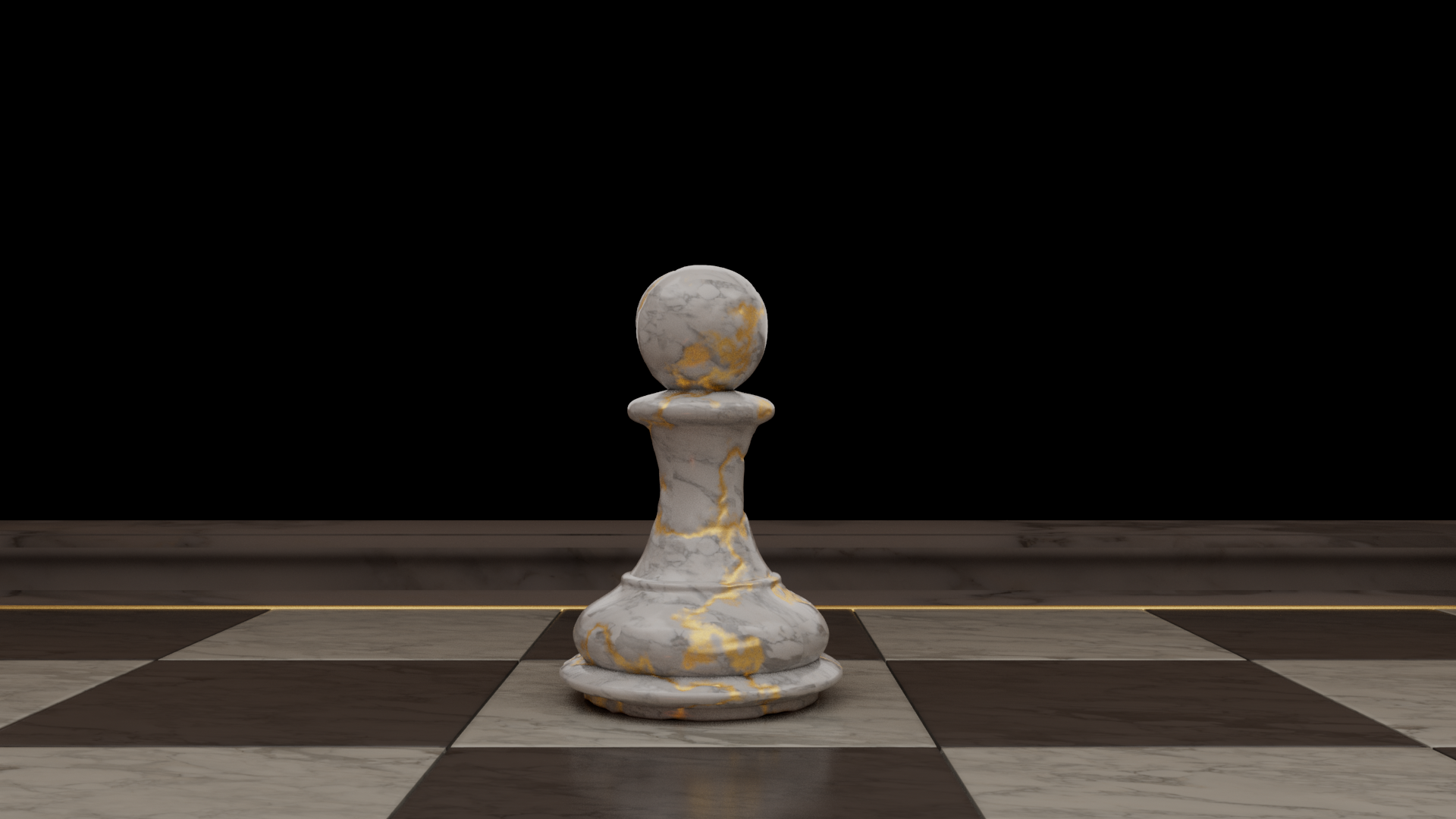2D-3D Animated Short Trailer
‘Mind Games’
Step into the captivating world of an animated short, where a thrilling chess battle unfolds before your eyes. Combining the immersive power of both 2D and 3D animation techniques, this trailer showcases a mesmerizing display of creativity and technical prowess. The 3D animated segments bring the chess pieces to life, showcasing their fluid movements and strategic interactions across the board, while the 2D animation captures the intricate emotions and expressions of the characters, adding depth and richness to the narrative. As the game intensifies, clever strategies and counter-attacks build tension, immersing the audience in the captivating battle. Finally, the animation slows down to highlight the pivotal winning move, leaving viewers in awe of the complexity of the battle.
Roles and Contributions
For this project, I utilized a range of software tools, including Autodesk Maya, After Effects, Procreate, Illustrator, and Photoshop, to contribute to various aspects of the production. Additionally, Arnold was employed to enhance the visual quality of the 3D elements. While my responsibilities encompassed these areas, Nuke was skillfully used to ensure impeccable composition. Although I was not directly involved in this aspect of the project, I oversaw the entire process to ensure the style of the project remained consistent and pleasing to the eye. The resulting trailer captures the essence of the animated short, offering a glimpse into the immersive world of chess and showcasing my multifaceted skills and passion for animation.
Storyboard - Collaborated with the team to develop the storyboard, visualizing the sequence of events and key moments in the trailer. This ensured a cohesive and compelling narrative flow throughout the animation. (Procreate)
Concept Art - Responsible for creating the concept art as well as providing visual references and ideas for the overall look and feel of the characters, chess pieces, and chessboard environment. This involved sketching and refining initial designs to guide the animation process. (Procreate, Adobe Illustrator)
Modeling - Took charge of creating 3D models of the chess pieces, paying attention to detail and accuracy. This involved sculpting and refining the shapes and forms of each piece, capturing their unique characteristics. (Autodesk Maya)
Texturing - Implemented shaders using nodes to enhance the visual appearance of the 3D models. This included creating realistic materials and textures for the chess pieces, optimizing their appearance under different lighting conditions. (Autodesk Maya)
Animation - Responsible for creating the dynamic and lifelike movements of the chess pieces using 3D animation techniques. This involved animating the pieces' motions across the board with precision and fluidity, ensuring a visually engaging experience for the audience. (Autodesk Maya)
Played a role in the 2D animation segment of the trailer. This involved animating the body language of the horse, the opening scene, and other elements to convey the intensity and excitement of the chess battle. (After Effects)
3D VFX - Utilized 3D visual effects techniques to enhance the overall impact of the animation. This included creating shatter effects, simulations other elements that added depth and visual interest to the scenes. (Autodesk Maya)
3D Models
Paying attention to detail and accuracy, I used Autodesk Maya to model the chess pieces. I adhered to 3D modeling best practices by ensuring the faces of the models represented quads while combining both aesthetic appeal and practical design.
Texturing + Shading
I created a marble shader by procedurally generating cracks and using Arnold's aiStandardSurface nodes to create the gold and marble shaders. This approach allowed for greater flexibility and adaptability, making it easier to achieve various visual effects without manually creating or modifying textures for each variation.
Procedural Cracks Shader - I generated realistic cracks on the surfaces of the chess pieces. The process involved creating a stucco node, which serves as the foundation for generating the cracks in the shader. To make the cracks more prominent, an aiRange node was used to adjust the contrast levels, increasing the difference between the cracked and non-cracked areas. A second aiRange node was added to the aiStandardSurface shading group to control the depth of the cracks. By manipulating this node, you could vary the intensity of the displacement to create a more defined cracked surface.
Marble Shader - I employed procedural tactics to create the marble shader. This shader was implemented using an aiStandardSurface node with a combination of albedo and roughness texture maps. Notably, I utilized triplanar nodes to avoid creating UVs on the model, streamlining the process while maintaining high-quality results. Additionally, an aiRange node allowed me to precisely control the roughness, fine-tuning the marble's appearance.
Gold Shader - In order to achieve a realistic gold appearance for the inside of the cracks, I utilized Arnold's aiStandardSurface node and leveraged its gold preset. From there, I adjusted the specular levels to decrease the reflection and create a more dull look.
Shader Blending - Bringing everything together, I blended the three shaders I created using an aiMixShader node. The procedural cracks shader acted as a blend mask, seamlessly blending the gold shader and the marble shader into the final material.

